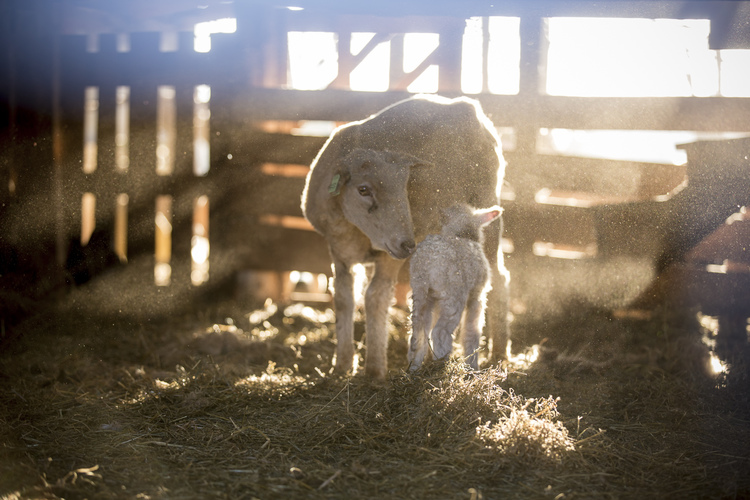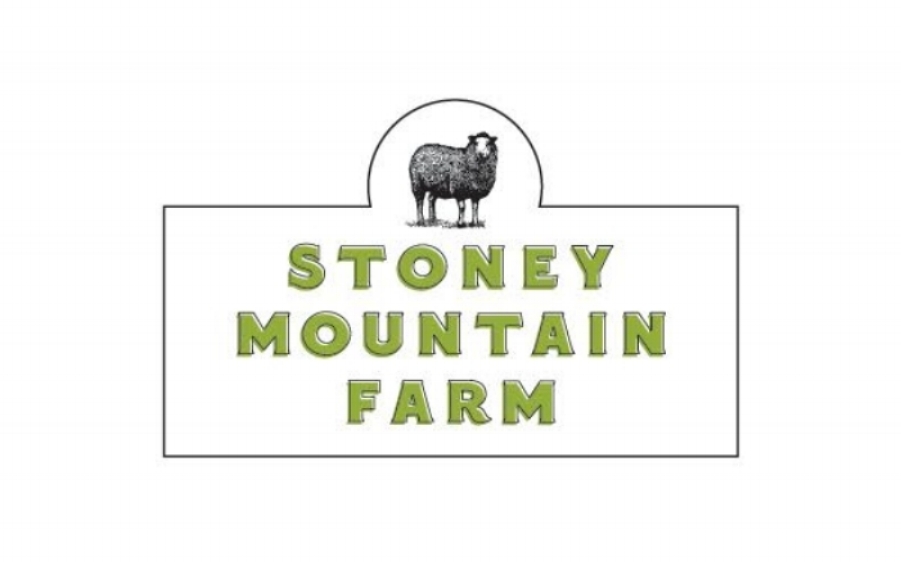
-
December 2025
- Dec 12, 2025 The Magic of Pan-Banging Ginger Molasses Cookies Dec 12, 2025
- Dec 2, 2025 The Harvest Awe: Finding Beauty in the Farmer's Bounty Dec 2, 2025
-
November 2025
- Nov 5, 2025 The Unending Circle: Embracing Life and Death on Our Sheep Farm Nov 5, 2025
-
October 2025
- Oct 23, 2025 The Scent of a Memory: How My Mother’s Pillowcase Brought Me Back to My Senses Oct 23, 2025
- Oct 7, 2025 When Life Upends the Chore Chart: A Hard-Won Lesson in Farm Preparedness Oct 7, 2025
-
September 2025
- Sep 30, 2025 Breeding season is underway Sep 30, 2025
- Sep 4, 2025 Buzz, Baa, and Felt! A Sweet New Workshop is Coming to the Farm Sep 4, 2025
-
August 2025
- Aug 13, 2025 The Dirt on Dreams: The Joy and Challenges of Leaving Your 9-to-5 for a Farm Aug 13, 2025
-
July 2025
- Jul 31, 2025 Mutton: It's a Flavor, Not Just an Age! Jul 31, 2025
- Jul 14, 2025 The Lines We Live: Can We Truly Understand Aging? Jul 14, 2025
- Jul 1, 2025 When the Stars Align: A Blackberry Bonanza! Jul 1, 2025
-
June 2025
- Jun 9, 2025 Our Holistic Approach to Sheep Healthcare: Continued Jun 9, 2025
-
May 2025
- May 21, 2025 Against All Advice: I Traded My Suit for Carhartts at 47 May 21, 2025
- May 19, 2025 Embrace the Earth: The Surprising Benefits of Wool Sponges May 19, 2025
-
March 2025
- Mar 31, 2025 Skirting Wool: The Essential First Step to Beautiful Fiber Mar 31, 2025
- Mar 17, 2025 Do Sheep Need a Barn? The Answer is in Their Wool! Mar 17, 2025
-
February 2025
- Feb 23, 2025 Cherishing Culinary Heirlooms: My favorite Kitchen Utensil Feb 23, 2025
- Feb 11, 2025 Wool Pellets Feb 11, 2025
- Feb 6, 2025 Fresh from the dirt: Horseradish Sauce Feb 6, 2025
- Feb 3, 2025 Lamb Fagioli Feb 3, 2025
-
January 2025
- Jan 15, 2025 Woven Together: How wool changed my life Jan 15, 2025
-
December 2024
- Dec 5, 2024 Seventeen Years of Sheep, Sweat, and Manchego: A Love Story Dec 5, 2024
-
September 2024
- Sep 10, 2024 Back to basics with sheep healthcare Sep 10, 2024
- Sep 10, 2024 Mac and Cheese Bites Sep 10, 2024
-
August 2024
- Aug 12, 2024 Tales of a female farmer Aug 12, 2024
-
July 2024
- Jul 12, 2024 Caring for sheep hides Jul 12, 2024
- Jul 11, 2024 Cucumber Lemonade Jul 11, 2024
- Jul 1, 2024 Cucumber Gazpacho Jul 1, 2024
-
May 2024
- May 23, 2024 Almonds, Sweet and Spicy May 23, 2024
-
January 2024
- Jan 17, 2024 Sheep Fencing Gone Wrong: A Comedy of Errors Jan 17, 2024
- Jan 17, 2024 From City Lights to Farm Nights: Olga's First Chapter in the Dirt Jan 17, 2024
-
April 2023
- Apr 3, 2023 The journey to vegetarian, or not? Apr 3, 2023
-
March 2023
- Mar 20, 2023 Making sense of scents, or not... Mar 20, 2023
-
February 2023
- Feb 26, 2023 Lamb Sliders Feb 26, 2023
-
March 2022
- Mar 15, 2022 HOW TO BE THE BEST SHEPHERD: Lessons from a sheep Mar 15, 2022
-
January 2022
- Jan 17, 2022 Lamb Bone Broth /Stock Jan 17, 2022
-
April 2021
- Apr 26, 2021 Farming through Covid Apr 26, 2021
-
June 2020
- Jun 19, 2020 Turning 60 Jun 19, 2020
-
January 2020
- Jan 12, 2020 Your Wool Dryer Balls: What You Should Know (and Why It Matters) Jan 12, 2020
-
September 2019
- Sep 10, 2019 The Shepherd's Lesson: Sometimes, the Sheep Know Best Sep 10, 2019
-
June 2019
- Jun 21, 2019 Weaning: A Shepherd's Reflection on Loss Jun 21, 2019
- Jun 17, 2019 Strawberry Balsamic Basil Pops Jun 17, 2019
- Jun 10, 2019 Collard Salad Jun 10, 2019
-
February 2019
- Feb 28, 2019 Not a Washout After All: Shearing Day Success Feb 28, 2019
- Feb 5, 2019 The life of a sheep! Feb 5, 2019
-
January 2019
- Jan 25, 2019 Lamb Liver Paté Jan 25, 2019
-
August 2018
- Aug 23, 2018 Pokeweed, Friend or Foe? Aug 23, 2018
-
July 2018
- Jul 20, 2018 Cucumbers Galore Jul 20, 2018
-
September 2016
- Sep 5, 2016 Mother Nature's Lessons Sep 5, 2016
-
August 2016
- Aug 23, 2016 Walking the Walk Aug 23, 2016
-
July 2015
- Jul 2, 2015 To Wean or not to Wean Jul 2, 2015
-
February 2015
- Feb 1, 2015 Sustainability & Our Precious Soil Feb 1, 2015
-
July 2014
- Jul 24, 2014 Squash Lasagna Jul 24, 2014
- Jul 24, 2014 Squash Squares Jul 24, 2014
-
June 2014
- Jun 2, 2014 Sustainability...What's it all about! Jun 2, 2014
-
May 2014
- May 29, 2014 What I know now.... May 29, 2014
-
April 2014
- Apr 4, 2014 Is the boss the farmer or the sheep? Apr 4, 2014
- Apr 3, 2014 Felted Chicks Apr 3, 2014
-
January 2014
- Jan 28, 2014 Lamb Ribs Jan 28, 2014
- Jan 26, 2014 DIY Wool Dryer Balls Jan 26, 2014
- Jan 15, 2014 Let the New Year Begin Jan 15, 2014
- Jan 13, 2014 DIY Heat Jan 13, 2014
-
October 2013
- Oct 30, 2013 WHOLEsome Food: EGGS Oct 30, 2013
- Oct 7, 2013 Cinnamon Pickles Oct 7, 2013
- Oct 7, 2013 Dog Biscuits Oct 7, 2013
-
September 2013
- Sep 18, 2013 Peaches, Peaches everywhere Sep 18, 2013
-
August 2013
- Aug 14, 2013 The Spider and the Butterfly Aug 14, 2013
-
July 2013
- Jul 30, 2013 They don't wear galoshes Jul 30, 2013
- Jul 21, 2013 Blackberry Lime Jam Jul 21, 2013
- Jul 11, 2013 Lamb Sliders Jul 11, 2013
- Jul 9, 2013 Our Little Orchard Jul 9, 2013
- Jul 2, 2013 The Hay Bale Fiasco Jul 2, 2013
-
May 2013
- May 17, 2013 My Secret Place May 17, 2013
- May 2, 2013 April. Did I miss it? May 2, 2013
-
March 2013
- Mar 28, 2013 Prada to Carhart Mar 28, 2013
-
February 2013
- Feb 21, 2013 Puttin Up the Fence Feb 21, 2013
- Feb 7, 2013 Lovely Cup of Chai Feb 7, 2013
- Feb 5, 2013 Looking for Llama's Feb 5, 2013
-
January 2013
- Jan 29, 2013 Winter Garden Jan 29, 2013
- Jan 24, 2013 Breeding season on the farm: Sheep Thrills and A farmers imagination Jan 24, 2013
-
September 2012
- Sep 7, 2012 Pickles! Sep 7, 2012
-
June 2012
- Jun 13, 2012 Morning Gifts Jun 13, 2012
- Jun 5, 2012 Finding the Words Jun 5, 2012
-
April 2012
- Apr 13, 2012 The girls and a few token boys! Apr 13, 2012
-
March 2012
- Mar 30, 2012 Flavor! Mar 30, 2012
-
October 2011
- Oct 9, 2011 Hay. A little three letter word that packs a PUNCH! Oct 9, 2011
-
July 2011
- Jul 22, 2011 The Glorious Tomato Jul 22, 2011
-
February 2011
- Feb 10, 2011 Shearing Day 2011 Feb 10, 2011
-
November 2010
- Nov 30, 2010 This farm gives me Goose Bumps Nov 30, 2010
-
July 2010
- Jul 23, 2010 Another aHaa Moment in Farming Jul 23, 2010
-
February 2010
- Feb 24, 2010 Farmers Wearing Lace? Feb 24, 2010
- Feb 16, 2010 Girls with no Coats Feb 16, 2010
-
January 2010
- Jan 4, 2010 Midnite on the farm Jan 4, 2010
-
April 2009
- Apr 22, 2009 Hard Day on the Farm Apr 22, 2009
- Apr 15, 2009 Lamb Meatballs Apr 15, 2009
- Apr 14, 2009 Spring Apr 14, 2009
- Apr 14, 2009 Roasted Coffee Marinated Leg of Lamb Apr 14, 2009
- Apr 13, 2009 In the Beginning Apr 13, 2009

